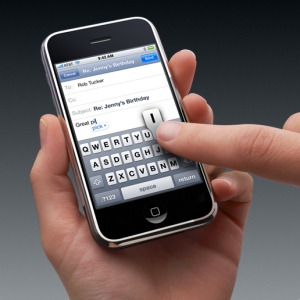Why Voice Won’t Replace Screen Search
Why Voice Won’t Replace Screen Search
by John Cosley, Op-Ed Contributor, February 16, 2017
With more than 30 million voice-first devices expected in U.S. homes before the end of the year, it’s no wonder there is so much buzz about voice, the user interface that will transform how brands and marketers engage with customers.

There’s a lot of talk that companies need to prepare for a world where voice is the primary — or even the only — way consumers will interact with devices, applications and services. In fact, Gartner predicts that by 2020, 30% of Web browsing will be done without a screen.
At CES in January, this idea — in the form of Amazon’s Alexa — took center stage.
The idea of voice replacing screen searching has understandably created a frenzy of questions for advertisers. As brands struggle to understand how they participate in this new world without being left behind, it’s important to retain perspective and to create a practical plan.
The next wave of search
There’s no question that voice is playing an increasing role in search. Improvements in natural language processing (NLP) are giving consumers a more natural and personal way to search. Indeed, NLP is at the core of making search “personal.” It’s moving toward a system that allows us to speak and interact in the way that is most natural to us in that moment. Search will be able to understand and respond in that same form.
It’s a massive opportunity, with 65% of smartphone owners using voice assistants.
However, voice is just one part of the story. The reality is that voice will often only enhance the screen search experience, and vice-versa, through omni-modality scenarios, not replace it. Plenty of business categories will experience disruption as a result of voice, but for so many more, voice will simply become part of the consumer experience equation.
Why? Because in the old idiom still holds true: “a picture is worth a thousand words.” Most people still rely on the value of visualization to get things done. Seeing is believing, after all — and it will never be completely replaced, even in a voice-led world.
The magic in the middle
The reality is that successful technology companies, including the makers of voice-enabled applications and devices, should be looking to develop experiences that allow for the seamless transition of customer use-case scenarios between a screen and voice services.
I like to call this the “magic in the middle.”
It is this convergence that will unlock the greater potential of what voice can deliver when it comes to completing a task. It’s the ability to start with a voice search, like “find me a blue strappy sandal in size 8” on Alexa or Cortana, and then transition that to screen for viewing.
Or, what if you need to purchase a suit for that perfect birthday night out on the town? How do you convey every nuance of the style, exact color, cut and dimensions of a suit that you want to purchase using only a voice search?
The truth is that one picture can convey dozens — if not hundreds — of data points that help you answer the question “is this the exact suit I want?” That’s not going away anytime soon.
Yes, voice search is already playing a defining role in this future. But it won’t take over completely. Each new shift in search technology builds on the past, and adds a new level of intelligent experiences.
A picture is worth a thousand words, so don’t count screen search out. It will remain a powerful, and ubiquitous, element. Marketers and advertisers would be well served to build new capabilities for voice search, but not at the expense of their investments on-screen experiences.
Perhaps most exciting is that the future of search will adapt to fit our behaviors, rather than forcing us to adapt.
MediaPost.com: Search Marketing Daily
(23)












